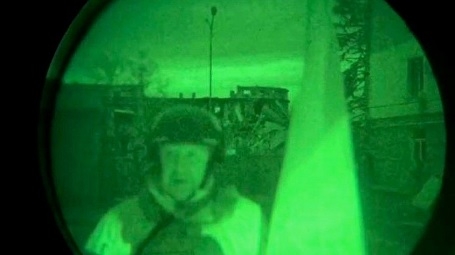‘Peace’- Not So Soon
06 Apr 2023 05:21:00

By Gwynne Dyer
Here’s some bad news on the ‘peace’ front. Most wars do not end in ‘negotiations’. There may be a peace treaty, but it usually just ratifies what has already happened on the battlefield. Just as frequently there’s only a ceasefire that freezes everything in place, often for a long, long time. And even a ceasefire is not possible until both sides have concluded that they can gain nothing worthwhile by further fighting. Russia and Ukraine aren’t there yet – and they may not get there this year.
MONDAY’S stunt, where Yevgeny Prigozhin held a Russian flag in his hands and declared that his ‘Wagner’ mercenary soldiers have finally conquered the Ukrainian city of Bakhmut, probably marks the end of Russian winter offensive. It was just a charade, of course. The footage was shot at night, in front of a nondescript administration building that signifies nothing in particular. Even Prigozhin admitted that it was only a victory “from a legal point of view”, i.e. he was standing on a street-corner that he wanted us to believe – well, wanted Russians to believe was really Bakhmut city’s centre. Ukrainian troops held 60% of Bakhmut yesterday, and they probably still hold 59% of it today. Frankly, it wouldn’t matter if they had lost Bakhmut; they’d just move back to long-prepared defences on the ridge west of the town. But when a costly four-month Russian offensive ends with an average advance of maybe five km., the audience demands closure. It’s now the Ukrainians’ turn to launch their long-anticipated offensive, but they’ll have to wait a little longer.
It will rain almost every day for the next two weeks, and the ground has to dry out before tanks can manoeuvre off-road. What will happen then – and when will there be peace? Here’s some bad news on the ‘peace’ front. Most wars do not end in ‘negotiations’. There may be a peace treaty, but it usually just ratifies what has already happened on the battlefield: the Congress of Vienna (post-Napoleon), the Treaty of Versailles (post-World War One), the Dayton Accords (Bosnia-Herzegovina 1995). Just as frequently there’s only a ceasefire that freezes everything in place, often for a long, long time (Cyprus 49 years, Korea 70 years). And even a ceasefire is not possible until both sides have concluded that they can gain nothing worthwhile by further fighting. Russia and Ukraine aren’t there yet – and they may not get there this year. The one thing that could provide a decisive outcome is a wholesale collapse of the Russian army. Armies sometimes do collapse when the losses are very high and the morale is very low – the Russian army’s collapse in 1917 was what let the Communists seize power – but it’s unlikely that the Russian forces currently in Ukraine are that far gone. They haven’t been doing well, of course, and it’s safe to say that the Ukrainians can no longer be decisively defeated. However, it’s a long way from that to predicting (as some are now doing) that Ukraine’s army will actually drive the Russians out of all the occupied territory. Numbers matter, and Ukraine is still heavily outnumbered in tanks, artillery and air power. (Russian planes don’t risk going deep into Ukraine’s air defences, but if Ukrainian ground forces are attacking, they don’t have to.) Ukraine’s armoured forces can probably manage one or even two ‘thunder runs’ like the one last September that took back most of Kharkiv province. However, if the Russian army doesn’t collapse, the Ukrainians would have to do eight or ten of those in a row to push the Russians all the way back to their own borders. That would verge on the miraculous. Otherwise, the outlook is for local Ukrainian victories within in a continuing war of attrition through the summer and into next winter.
The Western powers will be looking for signs that Vladimir Putin’s position as supreme war leader is weakening. Putin will be hoping for a Trump victory in 2024 or a collapse of the German coalition government. Neither of those things feels at all imminent, and the attrition is strangely balanced even though Russia’s wealth, population and resources are so much greater than Ukraine’s. That is because Putin is waging a scaled-down version of a 20th-century total war, which includes constant attacks on cities and other non-military targets. That didn’t ‘break the enemy’s will’ then and it won’t do so now, and it uses up Russian resources and forces pointlessly. Meanwhile, the Ukrainians are constrained by their own lack of means and the restrictions imposed on them by the NATO powers to wage a strictly limited war: only against military targets, and only on their own territory. Paradoxically, this operates to their advantage, since it prevents them from doing wasteful and irrelevant things. That’s why realism about what is attainable and what is not usually prevails within the Ukrainian civil and military leadership. Their highest priority in the summer offensive will therefore be just to win back enough territory to convince their Western backers to go on supplying and supporting them. Those are not necessarily the best targets strategically, but for Ukraine the political outcome (continued Western support) is more important than the military one.